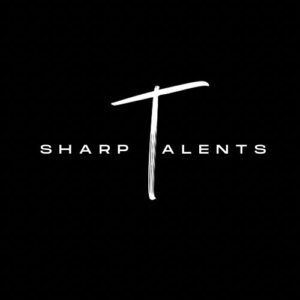Common Interview Questions:
Now that the payments job market is booming and there are lot of interviews happening, I thought of compiling a list of questions that you might get in an interview.
Note: This list is not exhaustive and must be used at the final stage of preparation.
Most of these questions were directed at me during my years of being interviewed. If you know the answers to all of these, then you should be good 😊
- What is SWIFT? Answer: SWIFT stands for Society for Worldwide Interbank Financial Telecommunication. It is a co-operative of banks that provide the infrastructure and standards for the exchange of payment messages, especially in the cross-border space. SWIFT has a proprietary message type called MT messages.
- What are the differences between SWIFT and SEPA? Answer: SEPA stands for Single Euro Payments Area which was created by the European Union to make the exchange of payment within the EU easy. SEPA deals with only payments in EURO currency. SEPA uses a version of the ISO20022 standard for the exchange of funds. You can now compare it with SWIFT
- What are the message types that you know? Answer: The most popular ones are SWIFT MT, SEPA PACS, PAIN and CAMT, SFMS (India), Fedwire Funds Service message format
- What are NOSTRO, VOSTRO and LORO accounts? Answer: http://www.paymentsdomain.com/2021/05/29/accounting-entries-in-payments/
- What are the different series of MT messages you know? Answer: For payments, it’s generally 1 series, 2 series, and 9 series.
- What does MT stand for? Answer: MT stands for Message Type. It is the propritary message standards developed by SWIFT.
- What is an MT103? Answer: It is a customer credit transfer payment message used to transfer funds bank cutomer funds. More details https://www.youtube.com/watch?v=iWcZlaDGYIU
- What is the difference between serial and cover methods? Answer: https://www.paiementor.com/swift-serial-and-cover-payments/
- What is RMA and accounting relationship? Answer: http://www.paymentsdomain.com/2021/06/18/misc-payment-concepts/
- Explain the full flow of a MT103 when payment is sent via. Serial method? Answer : https://www.paiementor.com/swift-mt103-serial-payment-analysis-1-3/
- Explain the full flow of a MT103 when payment is sent via. Cover method? Answer : https://www.paiementor.com/swift-mt103-202-cover-payment-analysis-part-1/
- When are the following message types used MT200, MT201, MT202, MT202 COV, MT203, MT210? Answer : MT200 – Is a message used by a bank to transfer funds from one of its account to another account of theirs with another banks. MT201 – It is multiple MT200s in a single message MT202 – This message is used by a bank to send money to anoter bank. All parties shouls be banks. MT202COV – It is a MT202 that is used to cover funds of an underlying payment message like an MT103 Announcement. MT203 – Multiple 202s MT210 – It is a notice to the receiver that the funds are on the way.
- What is the difference between MT202 and MT202 COV? Functionally and field wise Answer: MT202COV covers funds of an underlying payment while MT202 is not. MT202 willl have tag21 data as “Nonref” or empty whle MT202COV will have the reference (tag20) of the underlying payment in tag21. MT202COV will contain MT103 details.
- What is a MT101? Is it mandatory? Answer: MT101 is an instruction message sent by the customer to the bank to initiate a payment . It is not mandatory but is recommended.
- How will you (as a bank) send a payment to the beneficiary’s bank if there is no RMA? Answer: Route the paymet using the serial method via your correspondent.
- Explain the accounting entries of payment flow? Answer: http://www.paymentsdomain.com/2021/05/29/accounting-entries-in-payments/
- What are the different CSMs you have worked in? Answer: Based on your experiece 🙂
- What is RTGS and NET settlement? Answer: http://www.paymentsdomain.com/2021/05/14/parties-in-a-payment-system/
- What are instant payments? Answer: Payments that are executed and completed withing a matter of Seconds . Example SCT Inst (Europe), UPI (India)
- What is the equivalent of MT101, MT103, MT202 in SEPA? Answer: MT101 – Pain.001, MT103 – Pacs.008, MT202 – Pacs.009
- Can you explain flow of messages for a positive scenario in SEPA? Answer: http://www.paymentsdomain.com/2021/08/21/sct-happy-path/
- Can you explain the recall flow in SEPA? Answer : https://www.paiementor.com/the-messages-exchanged-in-the-sepa-credit-transfer-scheme/
- What is the equivalent of MT940, MT941, MT942 in SEPA? Answer: MT940- Camt.053 , MT941 and MT942 – Camt.052
- What are MT910s and MT900s? Answer: MT910 – Confirmation of credit it is a message sent by the bank to its customer information money is credited to their account. MT900- Confirmation of debit. It is a message sent by the bank to its customer information money is debited from their account.
- Can you explain about SWIFT T copy and Y copy services? Answer: https://www.swift.com/swift-resource/13521/download
- What is input credit file in SEPA?
- Can you explain SEPA direct debit flow? Answer: https://www.paiementor.com/iso-20022-messages-exchanged-in-the-sdd-schemes/
- What are the different charges in a SWIFT MT103 message? Answer: http://www.paymentsdomain.com/2021/06/12/charges-and-forex-fx/
- What are the different client channels from which payments are received? Answer: Broadly client channels are classified into online and offline channels. There are dedicated channels for corporate customers and private customers. Example of online channels Netbanking and mobile banking portals. Offline channels : Bank branch.
- What are the different checks performed in a payment engine? Answer : http://www.paymentsdomain.com/2021/06/05/payment-engines/
- What is STP? and 4EV? Answer : http://www.paymentsdomain.com/2021/06/05/payment-engines/
- Explain about the Sanction checks performed during payment processing
- What is SSI? Answer: SSI stands for Standing Settlement Instruction. These are agreements with other banks on how to settle funds. It will tell you who the EUR correspondent of the receiver bank is ? so that you can route the payment with them. I will explain why it’s done this way.
- What is SWIFT REF Service? Answer: These are a set of services provided by SWIFT. Kindly refer to SWIFT’s official website for the latest details.
- What is open banking? Answer: It is a concept where banks have to open up cutomer’s data to third parties. These third parties can provide different services to the customers after getting consent fromt the customer to access their account.
- Who are indirect participants of a settlement system? Answer: http://www.paymentsdomain.com/2021/07/25/sepa-clearing-and-settlement/
- Can you explain the structure of a BIC code? Answer : http://www.paymentsdomain.com/2021/06/18/misc-payment-concepts/
- Can you explain the different blocks of a SWIFT message? Answer : https://www.paiementor.com/swift-mt-message-structure-blocks-1-to-5/
- What is ISO20022 and can you explain the advantages of its use ? Answer : There are three major advantages 1. Rich data 2. Increased automation 3. Interoperability
- Can you explain the reject/return flow? Answer: If a credit transfer message is received from a bank and it has incorrect data or if the receiving bank is not able to complete the payment processing then the payment is rejected and a reject/return message is send. If that payment is not booked then reject is sent but if the payment is booked then a return message is sent.
- What are MT103 rejects and return? Answer : The concept is the same as question 40 but Tag72 field will contain the code word /REJT or /RETN
- What are the different types of charges in a payments and can you explain in detail about them? Answer : http://www.paymentsdomain.com/2021/06/12/charges-and-forex-fx/
- Can you explain about the FX functionality in payment processing? Answer: http://www.paymentsdomain.com/2021/06/12/charges-and-forex-fx/
Apart from these if the interviewer really wants to test you then he/she will dive deep into each tag of SWIFT messages and at this point if you are not from operations BG or have done multiple swift implementations then you might find it difficult. This is a very rare case of course so don’t worry.
All the best!! Waiting to hear the good news that you got selected 😊




Blog Comments
Vaibhav
June 1, 2021 at 1:22 pm
Thank you for sharing it . Can you please elaborate on RMA and accounting Relationship.
Santosh
June 1, 2021 at 3:16 pm
I will add answers for the questions one by one. By mid June planning to complete all the answers.
Harinarayanan
June 3, 2021 at 4:35 am
Hi santhosh, looking for your answers to understand much better
Santosh
June 3, 2021 at 5:33 am
Coming soon
Sujatha
June 6, 2021 at 3:24 pm
Could you explain about SWIFT REF Service?
Santosh
June 7, 2021 at 5:42 am
Will do in my answers
Dinesh
June 4, 2021 at 5:41 am
Nice.. Thanks for ur efforts… Really this will help in the interview.. Waiting for the answers for these questions
Denees
July 24, 2021 at 11:58 am
Hi Santosh,
Could you please help to find answer for question 26/40 and 42
Thanks
NAGARAJ SUSURLA RAMASUBBARAO
June 2, 2021 at 5:18 am
1. Society for worldwide Interbank Financial Telecommunication
3. All the 9 categories including the common group messages
6. Message Type
7. MT 103 – Customer Transfer
8. MT 103 & MT 202COV & MT205
9. Relationship Management Application
10 & 11 requires detailed explanation with a picture flow
12 Between Banks
13. MT 202 cov contains additional info about originator, beneficiary & details of pmt etc
15. Thru another correspondent thru whom RMA exists
24 MT 910 & 900 are Credit & Debit Confirmations
37 Structure of BIC Code – 8 Mandatory alphanumeric – first 4 alpha represent name of the bank eg. AMEX – American Express Bank – Second 2 alpa represent country code – US / IN
Third 2 alphanumeric location code or business party suffix eg. 33 – new york
Mohammed Shadab
June 2, 2021 at 5:57 am
Thank you for sharing this. Very helpfull.
Can you also help us understand a Payment flow with SWIFT MT(Inbound and Outbound) with different charge type with OUR,BEN,SHA
Just a basic payment on how we receive and how we send (as a bank)using these different charge type with illustration would be very helpfull.
Looking forward for this in one of your posts in future.
Thanks
Santosh
June 2, 2021 at 11:18 am
Sure .. In one of my future articles will cover it
Akash Rana
June 2, 2021 at 8:03 am
This looks great Santosh. Thanks for sharing it and appreciate your efforts in documenting these as well.
🙂
Rashmi Halale
June 3, 2021 at 3:50 am
Very helpful for payments interviews, great job in putting the effort to consolidate the questions
Santosh
June 3, 2021 at 3:53 am
Thanks
Rajesh Garapati
June 5, 2021 at 5:00 pm
Thanks really useful and waiting for answers
SWATI DUBEY
June 16, 2021 at 7:02 pm
Hi Santosh ,
It would be really great if I get the answers to these questions .
Rajbir
June 22, 2021 at 7:38 am
Hi Santosh,
You are really doing a great job, awaiting answers for these.
Thanks in advance.
Santosh
June 23, 2021 at 11:59 am
Sure
Madhavi
June 27, 2021 at 6:55 am
Hi Santosh, Your writings are fabulous and so useful to the people like who is interested in learning more on payments.
I appreciate your efforts for reaching the people with good content.
Looking forward for more articles from you.
Thanks a lot…!!!! Keep Rocking…!!!
Santosh
June 27, 2021 at 8:55 am
Thank you so much
Vaibhav
August 24, 2021 at 7:27 pm
Hi Santosh,
In one recent interview, a question asked to me that why RTGS and NEFT not processed on weekends? Why only IMPS will processed? When i search it, giving me answer like RTGS now possible on Saturday till 2 PM excpet 2nd and 4th Saturday and all Sunday.
Could you please help to eleobrate and provide more details on this.
Santosh
August 25, 2021 at 6:05 pm
It all comes to how payments are settled and the availability of CSM. Instant payments (IMPS) systems are usually available to the customers 24/7 because the settlement accounts are pre-funded (In most cases) hence there is no funds availability problem.
Santosh
July 9, 2022 at 6:16 pm
𝗖𝗹𝗼𝘂𝗱𝘄𝗮𝘆𝘀 𝗥𝗲𝘃𝗶𝗲𝘄:
Many had requested details about the hosting service I use. The answer to that is I was using Bluehost but recently I discovered Cloudwasys which is really awesome. Here is my review on the same.
If you are someone on a career break or want to take up a career in web design and building do drop me a message.
https://perfectwebsiteguide.com/cloudways-review/
#SantoshPosts #Website #Wordpress